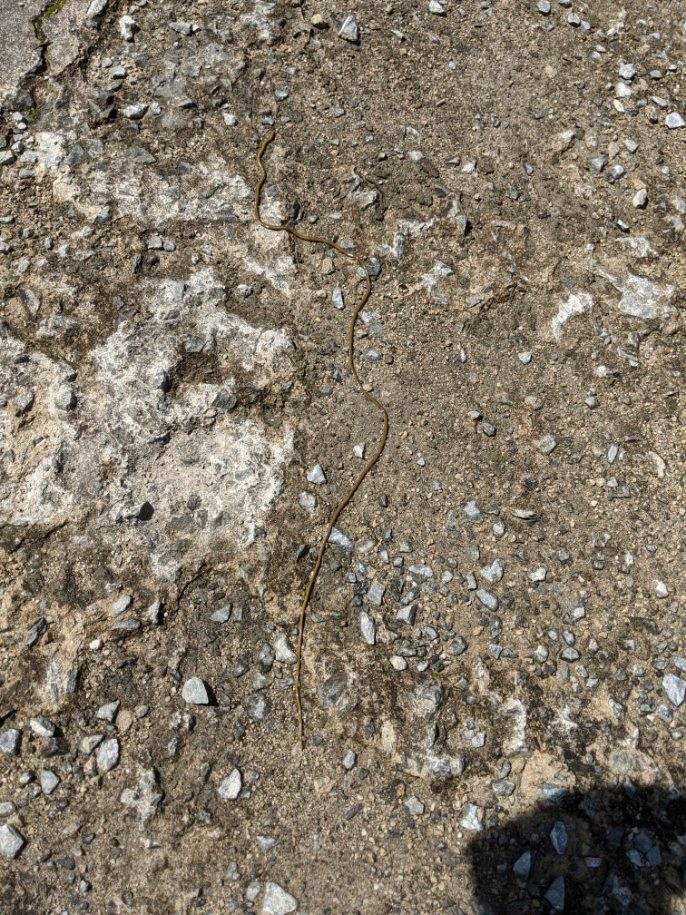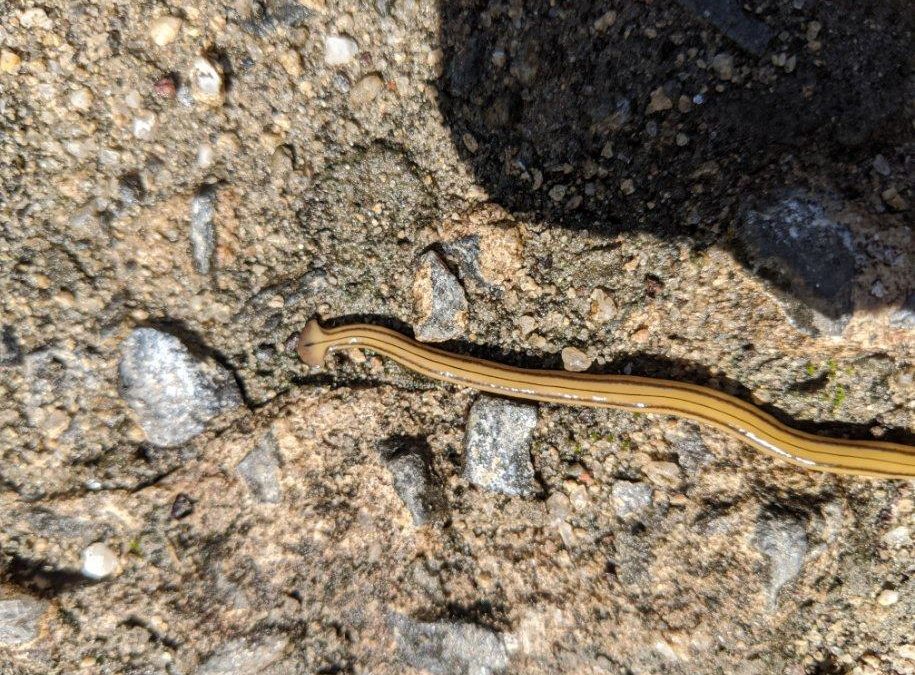Written by Christy Ferguson
From time to time the Kaleideum team will receive phone calls or in person visits from individuals requesting help identifying animals or insects they find in their everyday life. Recently, I responded to a voice mail message from John Collins asking if someone could help identify a unique “critter” he found at his home in Davie County.
I gave him a call, and we talked about his bizarre find.
As he began to describe “this animal he had never seen in his lifetime here in North Carolina,” I became more curious. He described this oddity as about two and half feet long with a triangular shaped head and long slimy body. I couldn’t imagine what he was describing, so I asked if he could send me some pictures? WOW! It was a fascinating creature.
I then began the research mission to see if I or some of our museum colleagues could help identify this little alien. And Mr. Collins and I agreed that this would be an awesome “teachable moment” to share.
At first glance, this creature looked like somethng from a Stephen King movie plot! But research determined that it was something a bit more mundane: a HAMMERHEAD FLATWORM (also known as Bipalium kewense, a species of land planarian). They get the name “hammerhead flatworm” because of the broad, triangular shape of their head. But these creatures are not entirely benign.
- Hammerhead flatworms are carnivores. They prey on earthworms, slugs, insect larvae, and even each other. They detect their prey by using chemoreceptors located on the underside of the head.
- Planarians contain a potent neurotoxin that the worm uses to immobilize prey and to deter predators. This toxin is also found in other species such as a pufferfish, blue-ringed octopus, and rough-skinned newts.
- At one time, researchers were concerned Planarians might be detrimental to plants. However, over time, they have been found to be harmless to plants and more of a potential threat to earthworm populations. Earthworms are a main food preference for Planarians. Earthworms are important to humans because they help to aerate and fertilize the soil we use for plant life. Therefore, Hammerhead Flatworms are considered a threatening invasive species to our helpful earthworm friends.
Hammerhead flatworms have also been mistakenly called hammerhead slugs because they move in a slug-like fashion. They do this by using the cilia on their creeping sole to glide over a strip of mucus they produce. They also prefer cool, damp places, typically residing under rocks, logs, or shrubs.
Still curious about this unique invertebrate? Here are some more cool facts:
- Hammerhead flatworms track earthworms by following their trails. Once they capture the earthworm, they secrete a sticky fluid and hold the prey in place with their muscles. To start they first push their pharynx out of their mouth and cover the earthworm with a neurotoxin they secrete. The Hammerhead flatworm is the only land invertebrate with this ability. Now that the earthworm’s flesh is mostly liquid form from the neurotoxin, the Hammerhead flatworm can “suck” up the dissolved earthworm easily. This ability is beneficial to the Hammerhead because the digestion process has essentially occurred outside of the worm’s body.
- Hammerhead flatworms are all hermaphroditic, meaning that they are simultaneously male and female and can reproduce either sexually or asexually.
- Hammerhead flatworms have been found across the United States, including North Carolina.
- They can grow to be up to 20 inches long.
- They are nocturnal and they prefer moist environments.
- They don’t attack or harm humans.
References:
- Boredom Therapy.com: https://boredomtherapy.com/hammerhead-worms/
- ThoughtCo. : https://www.thoughtco.com/hammerhead-worm-facts-4178101
- Wikipedia: https://en.wikipedia.org/wiki/Bipalium
- IFAS Extension, “Land Planarians, Bipalium kewense Moseley and Dolichoplana striata Moseley” (Tricladida: Terricola)1 Author: P. M. Choate and R. A. Dunn2 : https://edis.ifas.ufl.edu/pdffiles/IN/IN20600.pdf


Hammerhead Flatworm Videos


Recent Comments